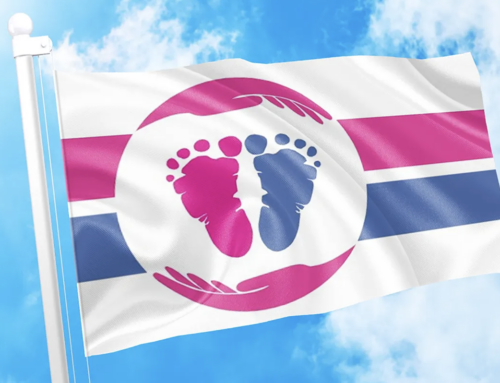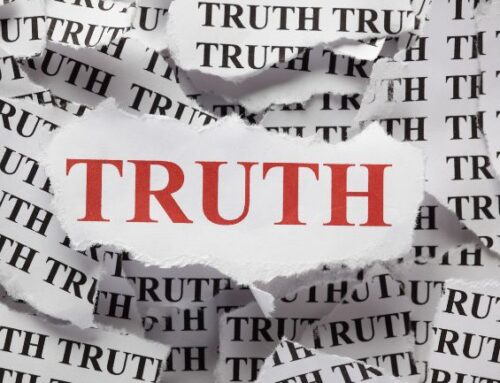The rescue movement in the United States continued steady growth in 1989, although there was less national publicity than in 1988. Solid rescue organizations capable of organizing rescues exist in almost every state and in most major cities. There were fewer large national or regional rescues, primarily because pro-lifers were putting their energy into local groups.
The Finn family from southern California illustrates the emerging pattern well. Sue Finn works full-time for Operation Rescue, and helped to organize the DC Project, a series of rescues in Washington in October 1989. She and her parents and brothers and sisters traveled to the nation’s capital and risked arrest there, but most of their time and energy has been invested in California rescues.
The family was first arrested in 1988, at a Human Life International symposium in California. Sherry (mother), John (father) and Sue were arrested during a rescue at one of Edward Alred’s abortion mills, in Orange in the spring of 1989. Sherry Finn’s participation in rescuing has been the most notable. She has been arrested several times, assaulted by police in San Diego, and sent to jail for 55 days in February 1990.
During her trial, Sherry and her co-defendants faced a new level of judicial tyranny. Five possible defenses were ruled out before the trial started, and a list of over 50 words, including “baby,” “killing,” and any references to God were excluded. People who uttered the forbidden words faced immediate imprisonment for contempt of court.
The Lambs
The “Victim Souls for the Unborn Christ Child,” or the “Lambs,” continued their inspiring but difficult work. They travel to communities where rescuers are facing trouble, conduct a rescue, and then maintain their identity with the unnamed unborn by refusing to give any name to the police other than Baby Doe; they also refuse to pay and fines or court costs.
In response to these tactics, Vermont authorities opened the first detention camp for pro-lifers in the country – a building on the grounds of a former state mental hospital in Waterbury, now set aside for rescuers. In February, the Lambs organized a series of rescues in Burlington. Some rescuers were jailed without being charged, without seeing a judge and without being given any opportunity to post bail (or refuse to post bail).
In Waterbury, the rescuers achieved the status of political prisoners, or prisoners of conscience. According to Joe Wall, a rescuer from Philadelphia, the prison authorities of the jail did not try to deal with individual prisoners, preferring to deal with the rescuers’ leaders. The rescuers wear their own clothes and set their own schedule.
Rescue outreach
After her release from prison in October 1988, Joan Andrews undertook a mission of extending Operation Rescue outside the U.S. After just two weeks of freedom, she helped to lead Canada’s first large rescue October 29, 1988 in Toronto. In 1989, she supported the birth of rescue movements in Spain and Brazil and then led a team of rescuers from the U.S. and Canada to Europe for a summer of work. Rescue Outreach gave a tremendous boost to the tiny rescue movement in Great Britain, then did the same in Holland, Italy and France.
Three bishops were arrested during the past year – Anglican (Catholic) Bishop James Mote of Denver, Colorado and Roman Catholic Bishops Vaughan and George Lynch. Although there is no precedent in U.S. history for the arrest and imprisonment of bishops, these events have been largely ignored.
Several years ago, Planned Parenthood ran ads across the nation showing the smoldering ruin (of an abortion ‘clinic) in the distance, framed by jackboots, it was part of the decade-long effort to smear pro-life non-violence by linking it with terrorism, arson and bombings. The ad also suggested that it was tolerable to burn down abortion ‘clinics,’ then someone might start burning down churches. During the past year, this possibility was made actual in California, three churches have been vandalized; and in New York, pro-abortionists and homosexuals disrupted Mass and desecrated the Eucharist.
Torture
Pre-mediated police torture of pro-lifers, declined somewhat in 1989, perhaps because of legislation cutting off federal housing funds for communities where there are three complaints of police brutality against non-violent demonstrators, or because of extensive publicity.
In San Diego, California, however, the police department has continued using nunchakus. [Nunchakus is an offensive weapon originally used in the martial arts, but now a ‘compliance’ device in the arsenal of some U.S. police forces. It is made up of two sticks joined with a chain, which when twisted induce excruciating pain. Ed]. At one rescue there, a nun in full habit was removed from the door of a mill with nunchakus.
In San Diego, a pro-lifer criticized a judge for blatant injustice during a trial. He was thrown into jail for contempt of court, and was severely beaten there, emerging with a purple eye and a broken jaw. Pro-lifers suspect that the beating was encouraged by the jailers, although they cannot prove it.
Fitness and suits
When pro-lifers have been convicted of trespass, they have usually been jailed or fined. While many groups, including Fr. Norm Wesline’s “Lambs,” refuse to pay a cent to the compromised court system, others have made decisions on a case-by-case basis. But in 1989, several states, including Maryland, raised the penalties for trespass at “medical facilities.”
Enforcement of anti-racketeering laws has been one of the more bizarre efforts to stop rescues. These laws have been a concern to civil libertarians for years because they are overly broad. A “pattern of criminal activity” designed to damage a business provides a basis for racketeering prosecution or civil suits. The legislators were after the Mafia, but the law can be applied in a discriminating way to a campaign of civil disobedience. When pro=abortion lawyers first filed anti-racketeering charges, pro-lifers laughed. But the cases went to trial, and the pro-lifers lost. Appeals all the way to the U.S. Supreme Court failed.
Several jurisdictions, including West Hartford, Connecticut, and Brookline, Massachusetts, have tried to recover their costs, such as police overtime pay, from the people they arrested. And the National Organization for Women (NOW) sued Operation Rescue in Binghamton, eventually obtaining a judgment against it.
That’s the bad news. The good news is that the rapidly rising financial costs of rescues have not been an effective deterrent to rescuers. In the Philadelphia area, about 1,500 people have risked their freedom to protect babies; the majority of them got involved after an anti-racketeering suit was brought against the local rescue organization.
Mike McMonagle, a Philadelphia rescue leader who was among the “racketeers,” says that he has not been damaged by the suit, nor has anyone else. His home is in his wife’s name, not his; he does not have extensive assets that could be seized.
McMonagle told The Interim, “The suits are designed to intimidate organized religion, not to get money.”
Unfortunately, the suits have been successful in this goal. Religious leaders including Rev. Jerry Falwell and New York’s John Cardinal O’Connor considered joining in rescues themselves, but eventually decided against, citing financial concerns, Mr. McMonagle said.
A crushing lawsuit closed Operation Rescue’s national office in Binghamton, N.Y., but the real work is local. Scores of local groups had enough experience and maturity to continue mounting large, successful rescues without help from a central office.
Rex Moses
The worst damage to pro-lifers from the pro-abortionist’s “hit-em-in-the-wallet” strategy was seen in Texas, and the person affected by it laughs at it…Rex Moses was a very wealthy young man last year, with his own business employing 85 people, jetting around the nation and coming home to a large estate.
Today, he and his family of six live in a duplex, and get food from the local food bank. He has been jailed repeatedly, and has lost several suits directed at him personally. What does he say about it?
“All my life, I was uncomfortable when I heard the story of the rich young man who asked Jesus what to do to inherit eternal life. Jesus told him what to do, and he went away sad. Well, I’m not sad,” he said.
When Moses began organizing rescues in Texas, he wanted people to look at the worst-case-scenario right from the beginning, and he was quick to explain what the worst was. “It isn’t jail,” he said. “It’s loss of income. In a church, if you ask people whether they are ready to go to jail for Jesus, you can get a lot of volunteers. As a matter of fact, you can get volunteers to die for the Lord. But if you ask, okay, who’s ready to risk his job for the Lord, suddenly all the hands go down. That is asking too much.” So he set an example.
Moses quotes a verse from the epistle of James: “Pure, unspoiled religion in the eyes of God is this: coming to the help of the children without fathers and mothers without husbands, and keeping yourself uncontaminated by the world.” For him, that meant organizing rescues and giving up all his wealth.
Moses is perhaps the best organizer the rescue movement has seen. For example, in late winter he erected bill-boards all over Corpus Christi which said simply, “My first duty is to God – Sheriff Hickey.” In Corpus Christi (far from Cuomo’s New York), everyone recognizes those words as a pro-life statement. Sheriff James T. Hickey had been asked by reporters what he would do if rescuers were sent to him for incarceration, and he said he would let them go, because “my first duty is to God.” (see the In Basket, April 1990).



